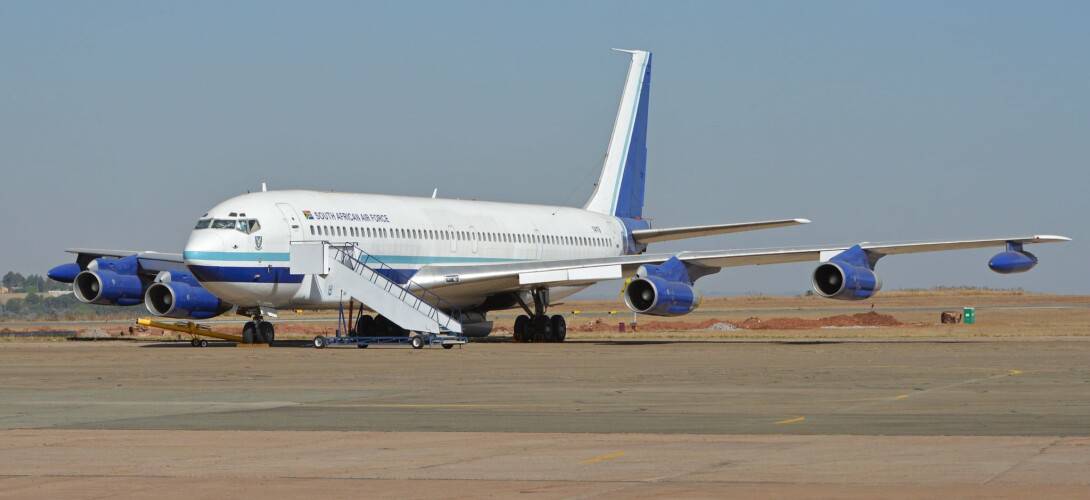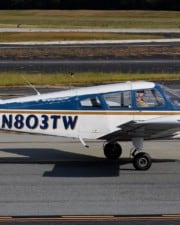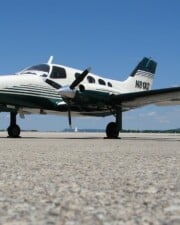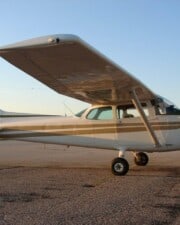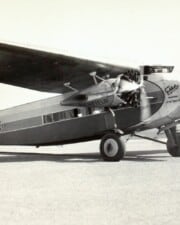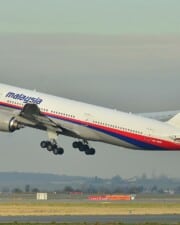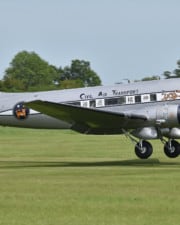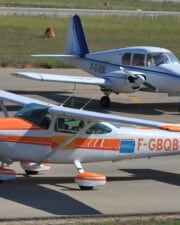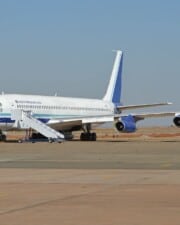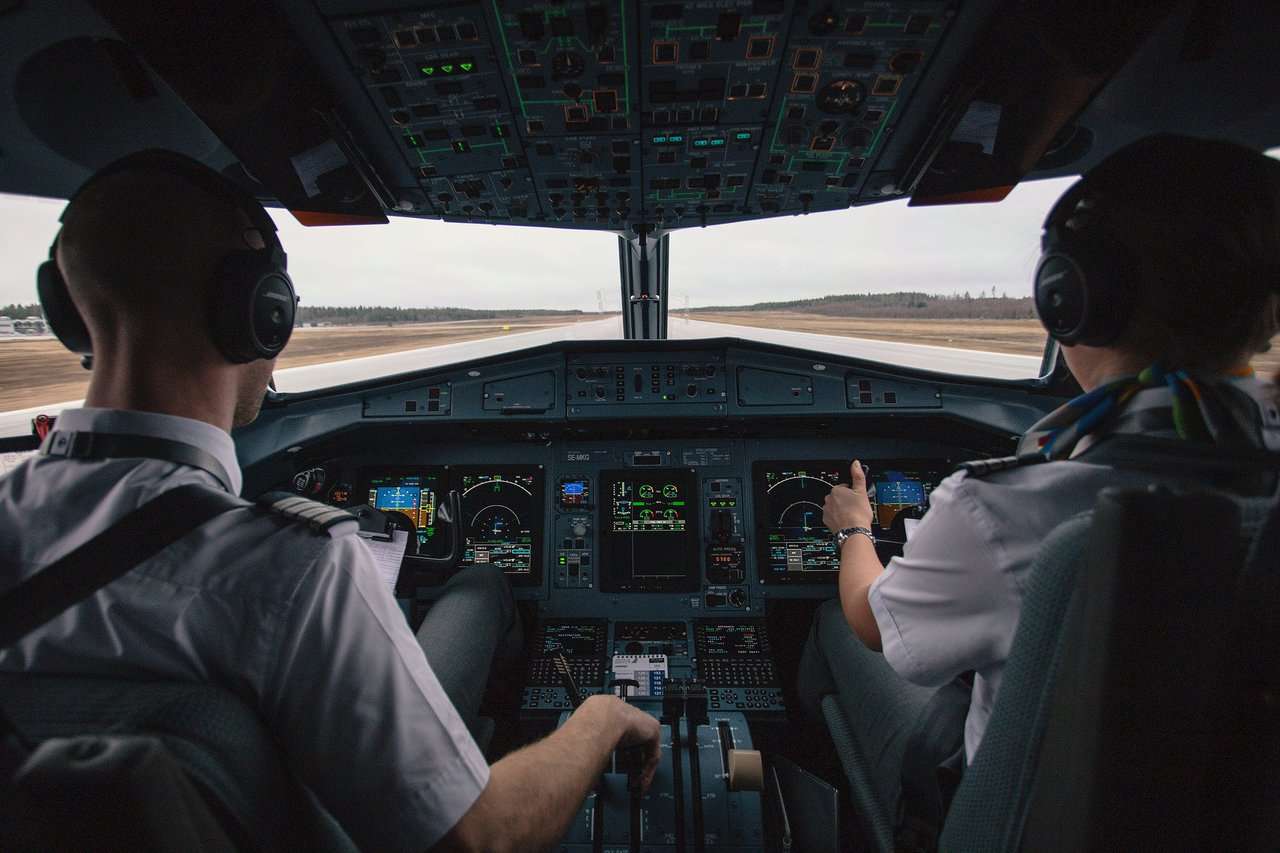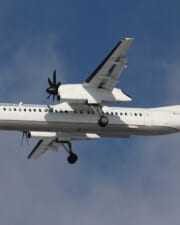The roar of a quad jet plane thundering down the runway is a sound unlike anything else in aviation. Some of the most recognizable aircraft of all time featured four engines, and four-engine aircraft are some of the fastest and largest ever produced.
Table of Contents
From the enormous Airbus A380 to the ageless Boeing 747, the supersonic Concorde to the workhorse BAe 146, quad-engine aircraft are truly some of the most remarkable passenger aircraft of all time.
Despite facing tough competition from faster, rangier, and more economical twin-jet aircraft, the quadjet will always be the pinnacle of modern aviation and the impossible made possible.
12. de Havilland Comet
The de Havilland Comet was developed and built in Hertfordshire by de Havilland in 1949, first entering into regular service three years later in 1952.
With four Ghost turbojet engines mounted inside the wing roots of the Comet’s wings, the Comet was the world’s first true jetliner, paving the way forward for all future jet-powered civilian planes.
De Havilland’s Comet enjoyed a triumphant introduction and was praised for its comfortable and roomy cabin, and big square windows.
The world’s first jetliner pushed the limit of aviation past what was believed to be possible at the time, and in doing so, set a high bar for all future jetliners to meet.
The de Havilland Comet’s Ghost engines proved to be more fuel efficient at high altitudes than its competitors at the time and the Comet featured a pressurized cabin, a revolutionary feature during the early 1950s.
11. Tupolev Tu-144

The Soviet-built Tupolev Tu-144 was the world’s first supersonic passenger jet aircraft when it was first flown on December 31, 1968, two months before the famous Concorde of France and Britain.
With a cruising speed of more than 1,400 miles per hour (2,200 km/h) and a range of 4,000 miles (6,500 km), the Tupolev Tu-144 was both faster and had a longer range than the Concorde.
Despite Concorde-beating speed and range, the Tu-144 could only achieve its max speed with the use of afterburners, burning up much more fuel than a Concorde on a similar flight plan.
The Tupolev Tu-144 was the first and fastest supersonic commercial jetliner ever produced, and although overshadowed by the more famous Concorde, the Tu-144 proved to be equally revolutionary.
10. Ilyushin Il-62
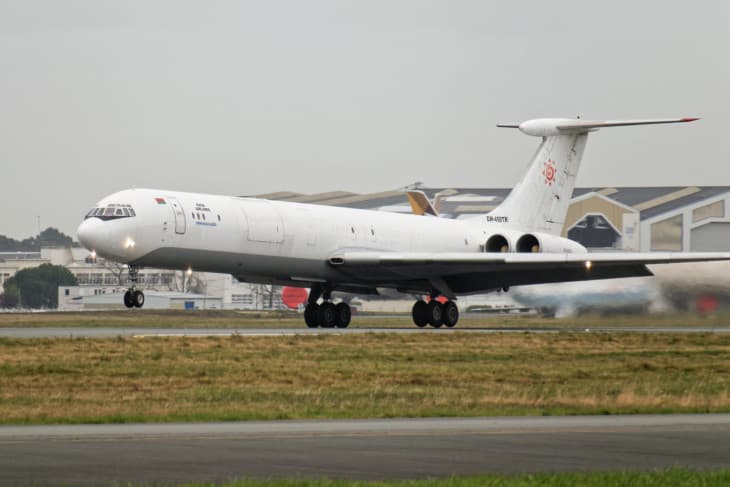
Designed during the 1960s by KAPO, the Ilyushin Il-62 was developed to replace the Ilyushin Il-18. It first took to the skies in 1963 and was the biggest jetliner in the world at the time with a max capacity of 198 passengers.
The Ilyushin Il-62 was a true pioneer for its time and featured a pressurized cabin without a non-circular cross-section fuselage for better structural rigidity, position lights of international standards, and ergonomic passenger doors.
It featured high-tech features for the sixties and was on par with the popular American Boeing 707 and Douglas DC-8, as well as the British Vickers VC-10, with whom it shared several design similarities.
Today, the Il-62 remains in operation by at least three carriers despite being introduced more than 50 years ago, making it one of the most successful Soviet-era aircraft ever produced.
Its reliability, durability, longevity, and supreme capability are what made the Il-62 a great quad-engine jetliner, not to mention its size, which all made the Il-62 one of the best four-engined aircraft of its era.
9. Vickers VC-10

The British-built Vickers VC-10 was first designed by Vickers-Armstrongs in 1962 and was a narrow-body, mid-sized long-range jetliner introduced to operate on long-haul flights for BOAC.
So good was the design of the VC-10 that the aircraft managed to break the transatlantic speed record for a subsonic jet, clocking in at a time of 5 hours and 1 minute, a record that stood for over 41 years.
The VC-10 was used as a commercial carrier from its introduction in 1962 until 1981, and as a military aircraft for the RAF as a refueling and general transportation during the same time, making it one of only a handful of jetliners used for both civilian and military duty.
Thanks to its record-setting design, fantastic performance in hot and high conditions, and the aircraft’s incredible adaptability to be suitable for civilian and military use, the VC-10 will certainly go down in history as one of the greatest quad-engined jetliners of all time.
8. Airbus A340

Featuring a wide-body, long-range design, the Airbus A340 was developed and manufactured during the 1980s with the sole purpose of competing against the likes of Boeing and McDonnell Douglas.
The A340 was the four-engine sibling of the A330, with both being designed and manufactured in unison with one another in order for Airbus to save costs.
It enjoyed its first flight in 1991 and featured state-of-the-art features for the time period when it was launched such as a glass cockpit, fly-by-wire controls, and a three-leg main landing gear for a heavier max takeoff weight.
With its hybrid design, the Airbus A340 could match the range of the quad-engined 747 whilst maintaining a similar fuel efficiency to that of the twin-engined 777, so as to satisfy the North American, European, and Asian markets.
The A340 came with state-of-the-art features when it was launched and had a max range exceeding all other jetliners at that time.
7. Boeing 720

The Boeing 720 was introduced by the American aircraft manufacturer as a narrow-body airliner capable of operating on shorter runways and routes to compete with the Boeing 707.
In 1960, the Boeing 720 officially joined the fleet of United Airlines and proved to be a profitable design for Boeing despite the manufacturer only selling 154 models, mainly because of low initial development costs.
Four Pratt & Whitney JT3C engines were tasked with powering the initial 720 design, which gave the aircraft a range of 2,800 nautical miles (5,200 km), better fuel consumption and a higher top speed than the Boeing 707.
The 720 was chosen by Led Zeppelin to be the band’s aircraft during their 1973 and 1975 American tours, a role which the 720 excelled in.
Featuring a shorter design and a wider wingspan than the 707, the 720 proved to be a great turbojet aircraft for carriers operating flights to shorter runways, but the introduction of the more economical 727 just four years after the 720’s launch ended the aircraft’s lifespan prematurely.
6. BAe 146

The BAe 146 was a quad-engine, short-haul, regional aircraft that was developed by British Aerospace and jointly built by British Aerospace and Avro International during the early 1980s.
It had a max capacity of 128 passengers and was produced between 1983 and 2001 and sold over 387 models worldwide, making it the most successful civilian British airliner to date.
The BAe 146 is famous in the aviation world for its unique design for a quad-engine jetliner, featuring a cantilever monoplane design with four turbofan engines mounted under the wings.
In 1986, the BAe 146 became the last aircraft to receive the honor of being chosen for service as part of the Queen’s Flight, the duty of carrying the Queen and other members of the Royal Family. If it’s good enough for royalty, it’s good enough for us!
Thanks to the aircraft’s size, affordability and capability, it proved to be an absolute hit with low-cost carriers operating routes to smaller runways.
The compact nature of the BAe 146 and its comfortable and roomy interior made it the perfect aircraft for operating routes to smaller European nations.
5. Douglas DC-8
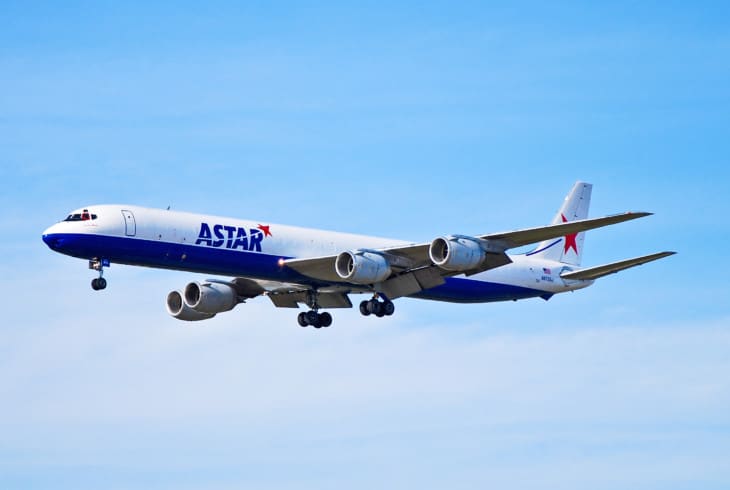
Introduced in 1955 and featuring a narrow-body design by American manufacturer Douglas Aircraft (and later by its successor McDonnell Douglas), the DC-8 was a 4 engine plane intended for long-range flights.
A set of four Pratt & Whitney JT3C turbojet engines powered the initial DC-8 design which provided the aircraft with a cruising speed of over 600 miles per hour (966 km/h), making the DC-8 the first commercial jetliner to break the sound barrier.
The DC-8’s significant boost in capacity and range compared to its turboprop predecessor, the DC-7, made the DC-8 immensely popular among carriers, helping Douglas to sell a total of 556 models before production ended in 1972.
A true pioneer during its time, the Douglas DC-8 was a pioneer that proved to be nearly 40% faster and could carry almost double the number of passengers compared to the DC-7, cementing its place as one of the best quad jets of its generation.
4. Boeing 707

The Boeing 707 was a narrow-body quad engine jetliner developed and manufactured by Boeing that was the main competitor for the DC-8 during the mid-20th century.
Boeing’s first jetliner, the 707 first took to the skies in 1957, less than a year before the DC-8. The 707 has been credited with kicking off the jet age in aviation and ruled over the skies during the 60s and 70s as both a civilian and military aircraft.
The 707 was powered by a set of four Pratt & Whitney JT3C turbojet engines and helped establish Boeing as one of the world’s leading aircraft manufacturers, as well as kickstart Boeing’s now-legendary 7×7 aircraft series.
Thanks to a long and wide design, the 707 revolutionized the way air carriers could arrange the aircraft’s seating configuration, and the 707’s significantly better safety record than the British-built de Havilland Comet of the same era made it a hit among passengers too.
3. Concorde
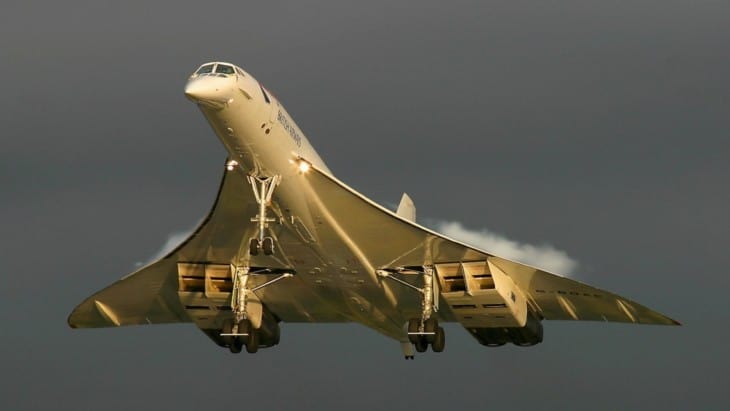
First envisioned in 1954 as the demand for a supersonic passenger aircraft grew, the Concorde was jointly developed by French manufacturer Aérospatiale and their British rivals BAC beginning in 1962.
It first took to the skies in 1969 and featured a tailless delta design with four Rolls-Royce/Snecma Olympus 593 turbojet engines powering it to supersonic speeds.
The Concorde was truly ahead of its time and featured fly-by-wire controls and the ability to maintain cruising speeds of 1,347 miles per hour (2,167 km/h) over long distances.
While the Concorde broke virtually every speed record for a commercial jet, it was never the fastest commercial passenger aircraft ever flown, that record belongs to the Tupolev Tu-144.
The Concorde showed the world that reliable and comfortable supersonic civilian air travel was possible, and even though it wasn’t the first supersonic jetliner, it will forever be remembered as the most successful one.
2. Airbus A380
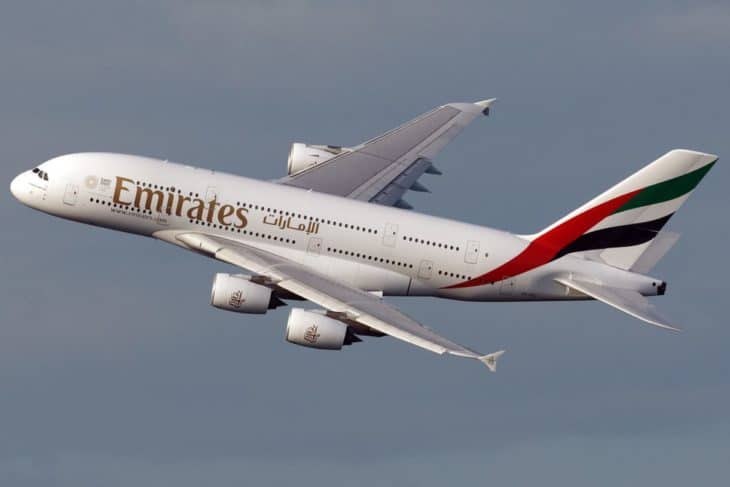
The mighty Airbus A380 is a wide-bodied jetliner first conceived in 1994. To date, it is the largest passenger aircraft ever produced and the only true double-deck aircraft.
The quad-engine A380 cemented itself as one of the best and safest aircraft ever produced, thanks to the $25 billion development costs Airbus sunk into the A380 project to ensure it’s the most cutting-edge aircraft in the sky.
Out of a total of 254 aircraft built, not a single A380 was ever involved in a fatal accident, with 239 A380s still in operation around the world among 16 carriers as of 2022.
Its superb safety record, spacious cabin, more turbulent-resistant frame, and focus on passenger comfort made the A380 a fantastic jet to fly in as a passenger and one of the best-performing quad-engined aircraft ever built.
Due to low demand, Airbus stopped production of the A380 late 2021. The mighty A380 is losing ground to more modern planes such as the A350. In this day and age the A380 is just too big.
1. Boeing 747
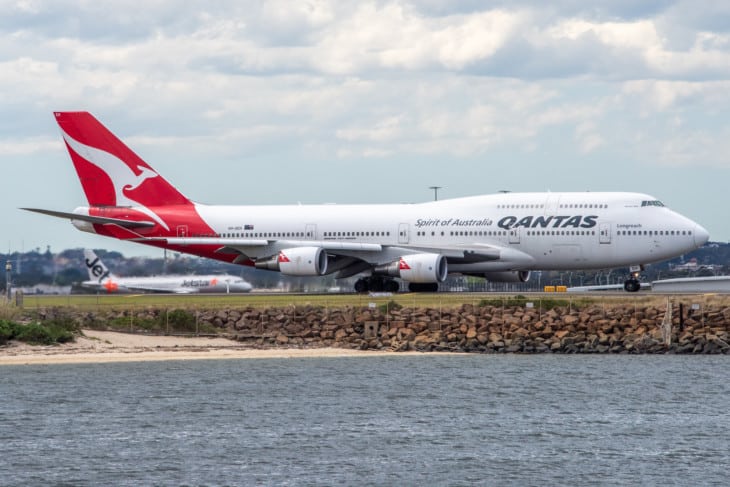
The Boeing 747 is synonymous with the airline industry and has ruled over the skies since it was first launched way back in 1968.
Powered by four turbofan engines, the hulking 747 had to be manufactured in the custom-built Boeing Everett Plant, the world’s largest building by volume.
The 747 was the world’s first double-deck aircraft and was capable of carrying up to 524 passengers. The huge four engine plane enjoyed incredible longevity and remained in production until 2022, 54 years and 1,572 models after it was first introduced.
Apart from its revolutionary size, the iconic 747 became the aircraft of choice for the President of the United States and was even used to carry a Space Shuttle on its back, etching its name into aviation history as one of the greatest planes to ever grace the skies.
Nicknamed the “Queen of the Skies”, the 747 was able to fly further, longer, and smoother than any previous airliner, making it the best four-engined aircraft ever produced and possibly the greatest jetliner of all time.
Related Posts
